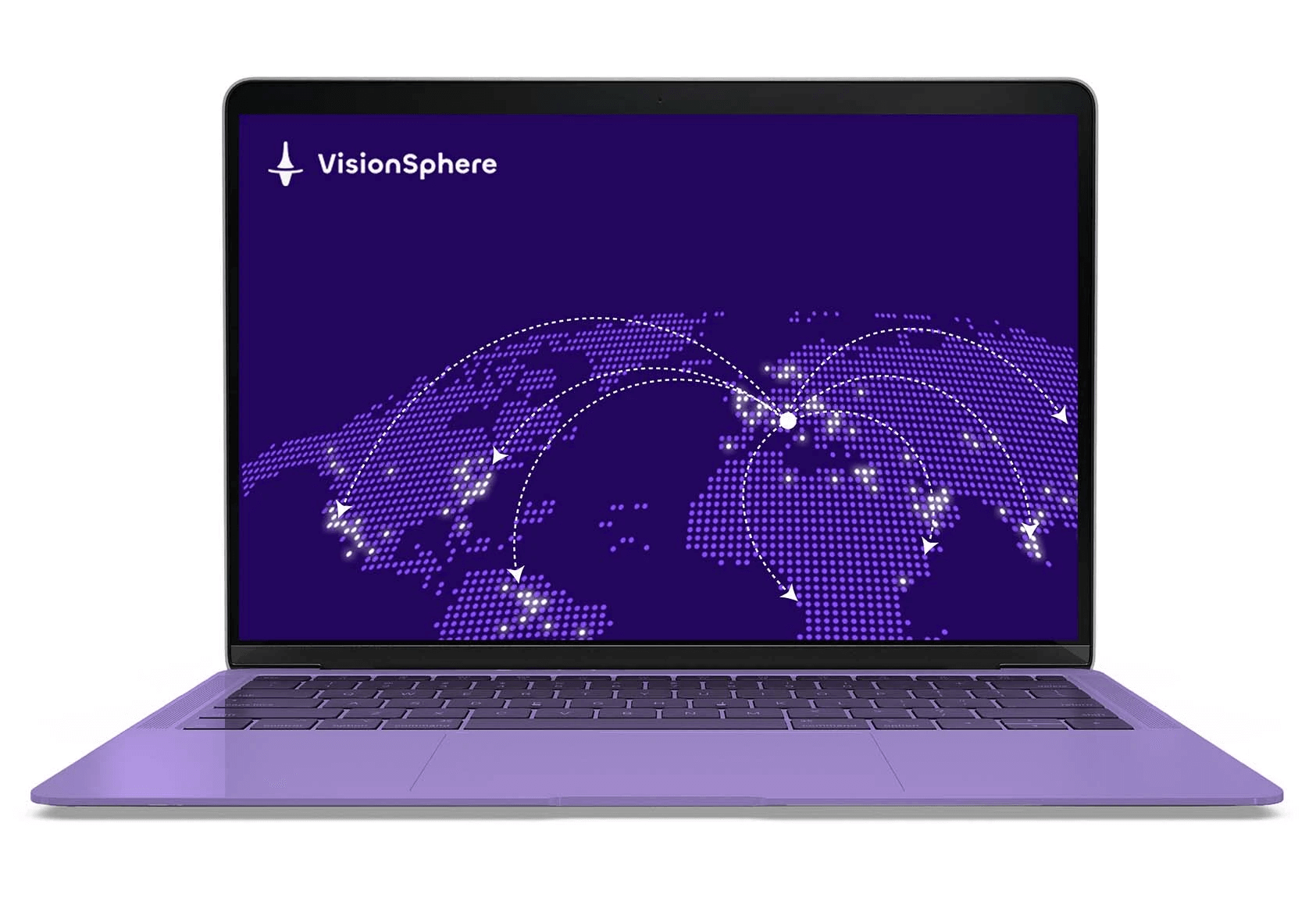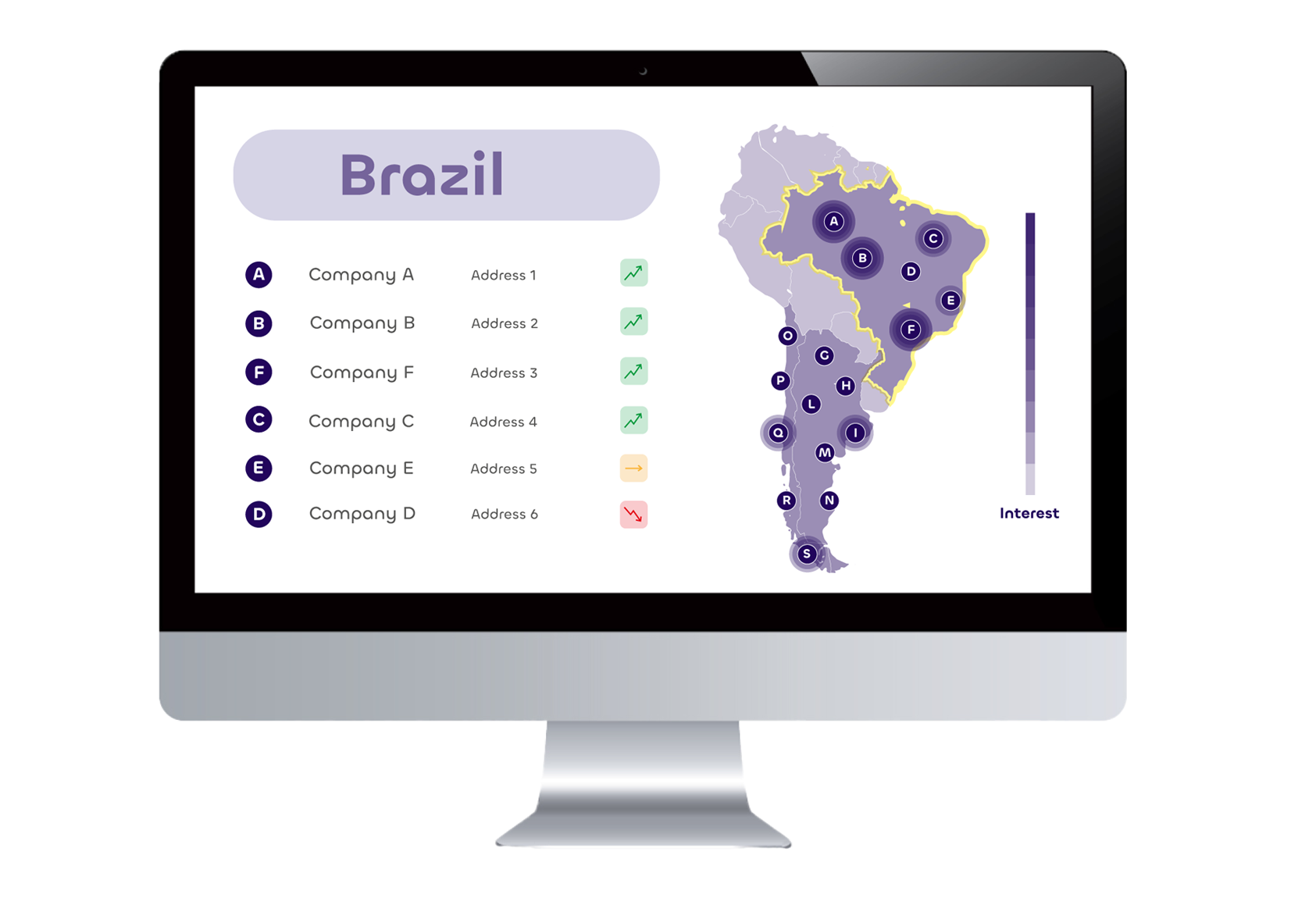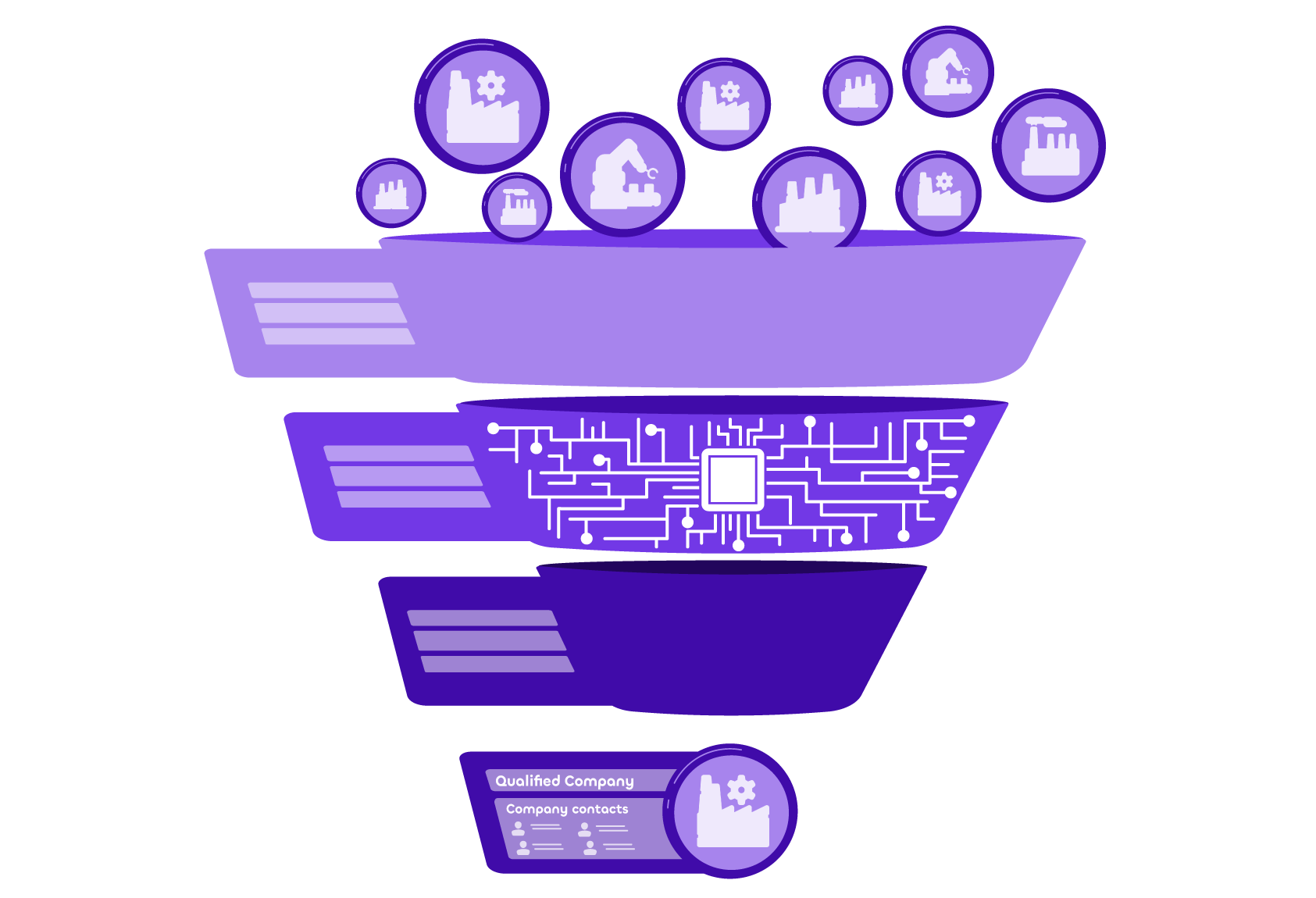Despite the evolution of digital, trade fairs, even in the B2B world, continue to be held to enrich the commercial strategies of companies. Even today, participation in trade fairs remains fundamental for the B2B sector because it offers a unique opportunity to establish direct human contacts. In commerce, but especially in B2B, relationships have always played a central role in sales: human contact remains essential to create significant and lasting connections with customers.
Unlike B2C, where communication is often “one-to-many,” B2B conversations are mainly ” one-to-one,” and for this reason, knowledge and trust play a key role.
B2B fairs therefore remain crucial for the positioning and networking of companies. That is why companies constantly participate in the most important trade fairs in their sector, often investing tens if not hundreds of thousands of euros to give visibility to their company.
Therefore, it is a real purchase of visibility, which should be able to be calculated promptly. However, this calculation has always been very complicated; for this reason, 2 VisionSphere functions were born: Fair Metrics and Prospect Monitoring, precisely to calculate the return on investment (ROI) at a B2B fair.
ROI of a B2B Fair calculated?
Let’s first define what ROI is. The so-called Return on Investment is a financial measure used to evaluate the profitability of an investment. In simple terms, ROI indicates the return generated by an investment in relation to the cost of the investment itself. To calculate the ROI of a B2B fair, we start with two assumptions:
- The items that populate the cost of the investment are always transparent and defined, and the main ones include personnel costs, management costs, travel costs, and costs for the exhibition stand
- The items that should enrich the return generated by the investment are only sometimes as clear and well-defined as the first ones.
Calculating the ROI is, therefore, more challenging. Although the formula is easy and intuitive, it represents the combination of a series of more complex factors in the B2B world.
Let’s analyze this aspect better: there are many factors that can positively influence the ROI value, and they can differ based on the sector in which you operate or on the way and technologies used during a fair. But there are key factors that, regardless of these two aspects, always figure into the calculation of ROI: the number of contracts obtained with companies met at the B2B trade fair and the number of sales made during the event.
Although it is not impossible to conclude a contract or a sale at a fair, the action times and mechanisms that must be triggered in a B2B company to move the purchasing system are generally very complex. For this reason, it becomes difficult for a company to effectively identify the values of the positive items to calculate the ROI of the B2B fair.
So here are two points to reflect on to gain a better understanding of how a company can effectively measure the impact of its investment in a B2B trade fair.
1 – Is it really possible to calculate the ROI immediately after a B2B fair?
Before calculating the ROI immediately after attending a B2B trade show, it is essential to know that its actual impact may take time to manifest itself fully. In the B2B context, decision-making processes are complex and can take months or even years before they are consolidated into an effective collaboration contract. That makes it even more difficult to evaluate the positive impact of the B2B Fair in the short term.
2 – How many of the companies you meet at the fair really remember your brand?
Companies have always participated in B2B fairs to exhibit their products and recently produced technologies, but defining their exhibition’s impact and effectiveness can be challenging. That is why Business Intelligence tools, such as VisionSphere, have been developed over the years. These Tools can collect fundamental insights to determine whether the companies you meet at the fair actually remember your brand and whether they are interested in your business after the fair.
Tools to calculate the ROI of a B2B Fair
Let’s now evaluate the variables that can positively impact the ROI of a B2B fair.
Whether they are commercial conversations arising from a meeting at the fair, concluded contracts, or direct sales, in the world of B2B, there is only one voice from which all this arises: a lead.
There are only two ways to generate leads during the show: online and offline.
- Offline: it is the most traditional and natural method in an environment like B2B fairs. Intrigued companies approach the stand, and after a dialogue of discussion and knowledge, contacts and, very often, business cards are exchanged. In the best cases, a call or a second meeting is arranged to deepen understanding of the product and/or service.
- Online: even though it is a physical and not a digital event, technology can be a valid ally to generate a few more leads during the B2B fair. Using the stand as an “advertising billboard,” it is possible to sponsor the link or QR code of a specific site page (better if explicitly created for the fair) to attract users to fill out a particular contact form.
In both cases, it is possible to have an effective count of the number of leads generated at the fair: the offline ones, represented by the meetings arranged and the people met, and the online ones, represented by the contacts generated on the site. However, you must always screen the leads to define which companies you are targeting for your business, whether they are online or offline.
In fact, although it is the most practical method to evaluate the impact of a B2B fair on your target companies, the number of business cards represents a quantitative and not a qualitative KPI (Key Performance Indicator). As we know, various figures participate in B2B fairs and can derive economic and relational advantages from the exhibiting companies. Among these, there are not only possible customers, but it is possible to meet: potential suppliers looking for customers, possible candidates to work in your company, or even stakeholders such as banks or insurance companies interested in investing in the sector; they are certainly all relevant figures but not in line with the business development objective with which companies participate in B2B fairs.
Despite an initial screening of leads to determine which ones are truly in target for their business, B2B companies lack the tools to define which and how many of these leads are actually interested and have the potential to translate into new customers over time.
For example, if a company were to end the trade show with 100 business cards collected, only 50 might be aligned with its business development. We could, therefore, define these 50 companies as interested.
But how interested are you?
Companies, therefore, find themselves having to calculate the ROI of the fair by assigning a value to the leads generated during the event. While it is common to value leads generated during a trade show based on traditional metrics and historical data, such as the cost to acquire new customers or the average value of existing customers, this approach remains a generic calculation that does not necessarily reflect the actual value of each lead, how it does not reflect a company’s business strategy.
In this context, Business Intelligence tools such as VisionSphere, particularly its functions Fair Metrics and Prospect Qualify, play a fundamental role in quickly calculating the ROI of a B2B fair.
How VisionSphere helps you quickly calculate the ROI of a B2B Fair
VisionSphere functions are useful tools for qualifying commercial opportunities on prospects and evaluating the impact of the presence at the fair on one’s branding.
Fair Metrics
A B2B company with clear sales objectives knows the names of the companies it would like to meet and from which it would like to be noticed by participating in a trade fair. In fact, when a prudent company decides to participate in a B2B fair, it already defines the companies it would like to meet at its stand: it therefore has precise targets, which are not just the spontaneous contacts it will meet at the fair. Choosing your potential customers is part of a winning commercial strategy. It allows you to define the relevance and value of a lead for the company’s strategic objectives and the probability of conversion into a customer.
VisionSphere’s Fair Metrics function can monitor and keep track of the searches your target companies do online on search engines related your brand and compare those carried out before with those carried out after the fair, quantifying the effectiveness of participation in the fair event and meetings.
In fact, by monitoring the online behavior of the target companies you want to meet in the weeks preceding the fair and comparing these data with those relating to the following weeks, it is possible to measure the evolution of knowledge of your brand: find out if a company already knew your brand before the event and if and how many times they search for it after the meeting. With this precise and measurable data a company can easily calculate the return on investment of the B2B fair assigning a value to the leads and evaluating its impact on its brand.
Prospect Qualify
Thanks to the Prospect Qualify feature it is possible to qualify new business opportunities that arise during the B2B fair and quantify their interest in the brand so as to be able to assign a value. By adding the companies that met at the fair to VisionSphere, it is possible to begin monitoring their online behavior and real interest in the brand, obtaining valuable insights in real-time, helpful in evaluating the commercial value of the lead, and calculating the ROI of the B2B fair. The searches that a company does online for a brand are, in fact, a clear and unmistakable indicator of its interest in that brand and the probability of a sale.
Prospect Qualify and Fair Metrics as tools to calculate ROI
In summary, Prospect Qualify and Fair Metrics are two functions that offer an effective way to quickly and accurately evaluate the potential of companies encountered during the trade fair event, allowing immediate analysis of the best-emerging sales opportunities and allowing participating companies to have a clear idea of ROI.
Conclusion
Calculating the ROI of B2B trade shows remains a complex challenge for companies, given the industry’s many variables and unique nature. However, innovative tools like VisionSphere represent a unique opportunity to quickly and effectively evaluate the impact of such events on your business.
Thanks to the Fair Metrics and Prospect Qualify functions, companies can obtain valuable information for their business and data-driven marketing choices that they could not obtain in any other way.
This data-driven approach allows companies to identify qualified leads more precisely and calculate ROI with greater accuracy, knowing the involvement and interest of their target.
In a context where competition is increasingly fierce and resources are limited, tools like VisionSphere represent a significant competitive advantage, which allows companies to optimize their trade fair investments and maximize results in the B2B sector.





